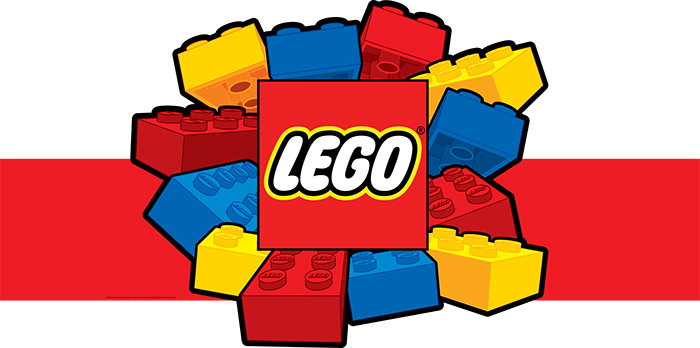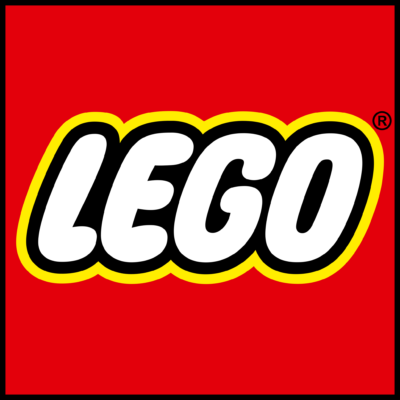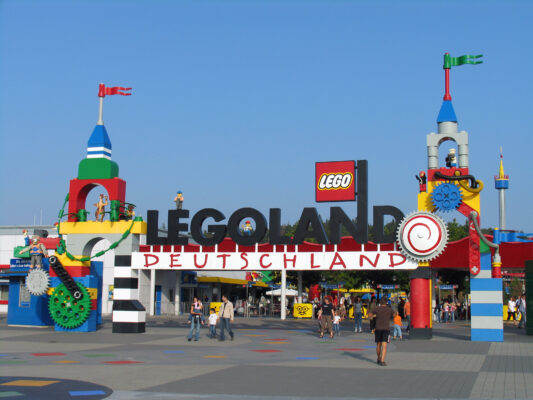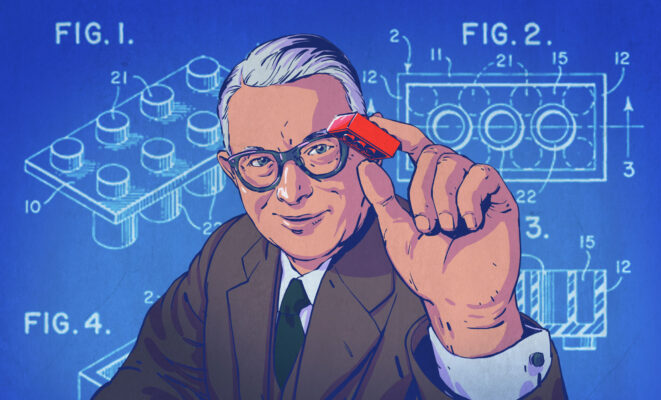
Besides being home to H&M, Ikea, Ericsson, Nokia, and The LEGO Group, the Scandinavian Peninsula is famous for its emphasis on simplicity, beauty, and functionality. Back in the day and even today, when it comes to winning the hearts of children (and adults who are into building things), the best option we have is to buy them a set of “The LEGO Bricks.”
The beloved Danish toymaking brand has achieved iconic status and universal appeal in the field since its inception in 1932. What began as a humble enterprise has evolved into a global phenomenon, captivating the imaginations of children and adults alike. The story of The LEGO Group is a testament to the power of creativity, innovation, and sheer determination.
The Early Days
The story commences in the quaint town of Billund, Denmark, in the early 1930s. It was here that a humble carpenter named Ole Kirk Kristiansen laid the first brick in what would become The LEGO Group. Ole Kirk possessed a relentless passion for woodworking and established his own business in 1932, initially crafting wooden toys and household items. He named his company “LEGO,” derived from the Danish phrase “leg godt,” which means “play well.” Little did he know that he was setting the stage for one of the most beloved toy brands in the world.
Later on, his sons, Godtfred and Karl, joined the family business. Their collective vision and commitment to quality laid the foundation for the LEGO brick as we know it today. The interlocking design of the LEGO brick allowed for endless possibilities, enabling children to construct and deconstruct, fostering creativity and problem-solving skills. The family’s dedication to precision and quality ensured that each brick was consistent, making them compatible across sets and eras.

Today, The LEGO Group is a household name and a symbol of creativity, innovation, and endless possibilities. The LEGO Group’s journey is a remarkable testament to the enduring power of imagination and creativity. It reminds us that even the smallest ideas can grow into something extraordinary when nurtured with dedication and passion. The LEGO Group’s journey is a story of boundless imagination, endless potential, and an enduring reminder that we all have the power to create our incredible worlds, one brick at a time.
The Golden Age of Innovation
The 1950s were a pivotal era for The LEGO Group. In 1958, the modern LEGO brick, with its iconic interlocking studs and tubes, was introduced. This invention was a game-changer, as it offered infinite possibilities for building and rebuilding. The Group also patented the “stud-and-tube coupling system,” ensuring their bricks’ compatibility and cementing their iconic status.
The company continued to innovate, introducing themed sets like the LEGO Town Plan in 1955 and the first LEGO train set in 1966. These sets allowed children to construct entire worlds with their imagination, from bustling cities to sprawling railways. The LEGO sets became a vessel for creativity, storytelling and a formula for success that would prove timeless.
The Rise to Global Prominence

The 1970s and 1980s saw The LEGO Group expand its global presence. They opened their first LEGOland theme park in 1968, providing a real-world manifestation of the imaginative worlds children built with their bricks. These theme parks were an instant hit, and LEGOland has since grown to become a global chain. The company further extended its reach with partnerships featuring beloved franchises like Star Wars, Harry Potter, and Marvel, allowing fans of all ages to bring their favourite characters and scenes to life. LEGO sets became collectors’ items, treasured by enthusiasts and loved by families.
The Digital Revolution
The new millennium brought another chapter in LEGO’s story. The company embraced digital technology and introduced LEGO Mindstorms in 1998, a platform for building programmable robots. It combined the physical and digital worlds, offering a glimpse into the future of interactive play and education. In 2014, “The LEGO Movie” was released, bringing LEGO characters to the big screen and creating a new generation of fans. The film celebrated the universality of the LEGO brand and its ability to spark creativity in all of us.
The Visionaries at The LEGO Group
Ole Kirk Kristiansen started his company as a carpentry workshop, producing wooden toys and household items. Ole Kirk Kristiansen’s vision was to create toys that encouraged imaginative play and learning, values that continue to be at the core of the Lego brand. He faced numerous challenges in the early years of his business. The Great Depression and the Second World War created economic hardships, but his resilience and commitment to quality allowed the company to thrive. In 1947, Lego introduced its first plastic interlocking bricks, a significant innovation that laid the foundation for the global Lego empire we know today.

Ole Kirk Kristiansen’s Family and Successors
Ole Kirk Kristiansen’s children played pivotal roles in the company’s growth and success. His son, Godtfred Kirk Christiansen, was particularly influential. Godtfred is credited with developing the modern Lego brick design, featuring the iconic stud-and-tube coupling system, which remains virtually unchanged to this day. The design innovation allowed for greater stability and versatility in building, and it became a defining feature of the Lego experience.
In 1958, Godtfred coined the term “LEGO System of Play,” emphasising the limitless creative potential of Lego bricks, marking a significant shift in the company’s branding and strategy, as it focused on creating a standardised system that encouraged open-ended play and creativity. The Lego Group’s commitment to quality and innovation helped it establish a strong presence in the global toy market.
Ole Kirk Kristiansen’s grandson, Kjeld Kirk Kristiansen, also played a pivotal role in the company’s development. He served as CEO and later as Chairman of the Lego Group. Under his leadership, Lego expanded its global reach and introduced new product lines, including Lego Technic, Lego Mindstorms, and licensed sets based on popular franchises such as Star Wars and Harry Potter. Kjeld’s tenure saw Lego become one of the world’s most recognisable and beloved toy brands.
The Family’s Commitment to Values

One remarkable aspect of the Kristiansen family’s stewardship of the Lego brand is their unwavering commitment to the company’s core values. Ole Kirk Kristiansen’s original vision of encouraging creativity, learning, and play has been preserved and expanded upon by his descendants. The family has maintained a focus on quality, durability, and innovation, which has earned Lego a reputation for producing timeless and high-quality toys.
As the Lego Group continues to thrive, Ole Kirk Kristiansen’s family remains deeply involved in the business. While the family’s commitment to tradition and core values remains steadfast, they also recognise the importance of staying current with the ever-changing world of technology and entertainment. The Kristiansen family’s dedication to quality, play, and philanthropy underscores the enduring success of Lego and ensures that the magic of building with colourful plastic bricks will continue to inspire generations to come.
Valuation
The Lego Group, renowned for its iconic interlocking plastic bricks, has consistently demonstrated remarkable valuation growth. The Danish company has evolved into a global toy and entertainment powerhouse. As of 2023, its estimated valuation was around $16 billion, including successful licensing agreements with popular franchises like Star Wars and Harry Potter, diversification into video games, movies, and theme parks.

